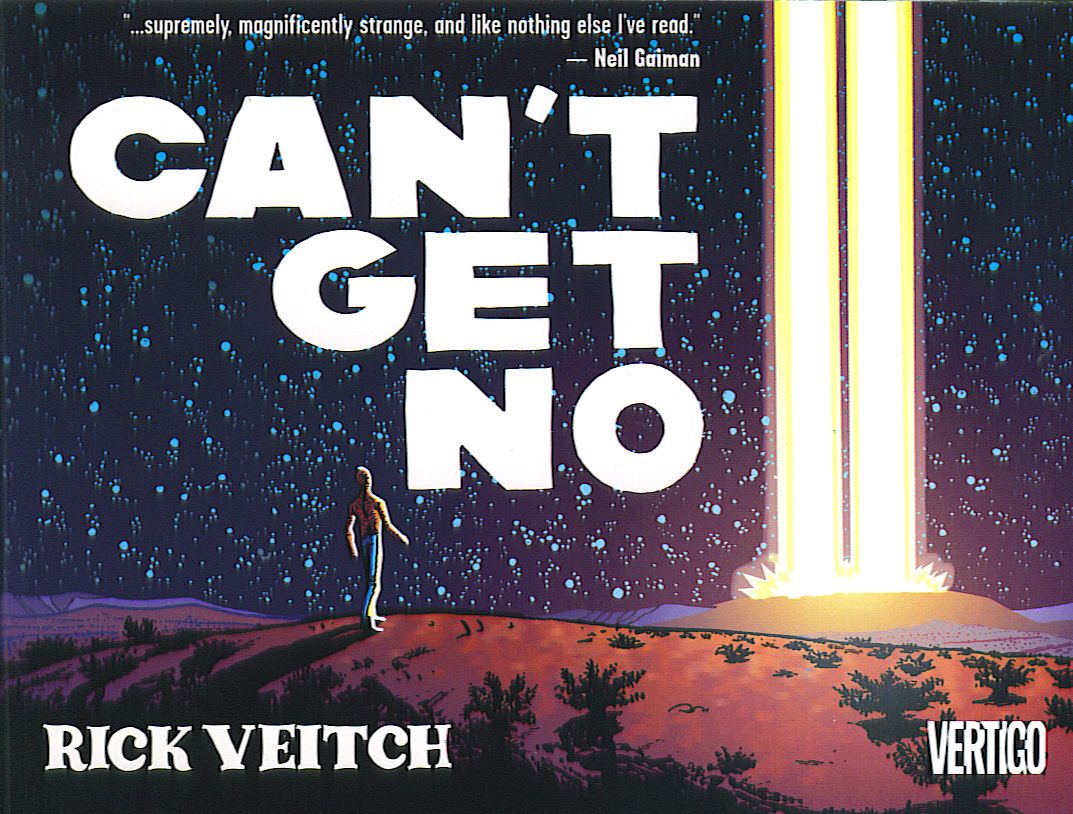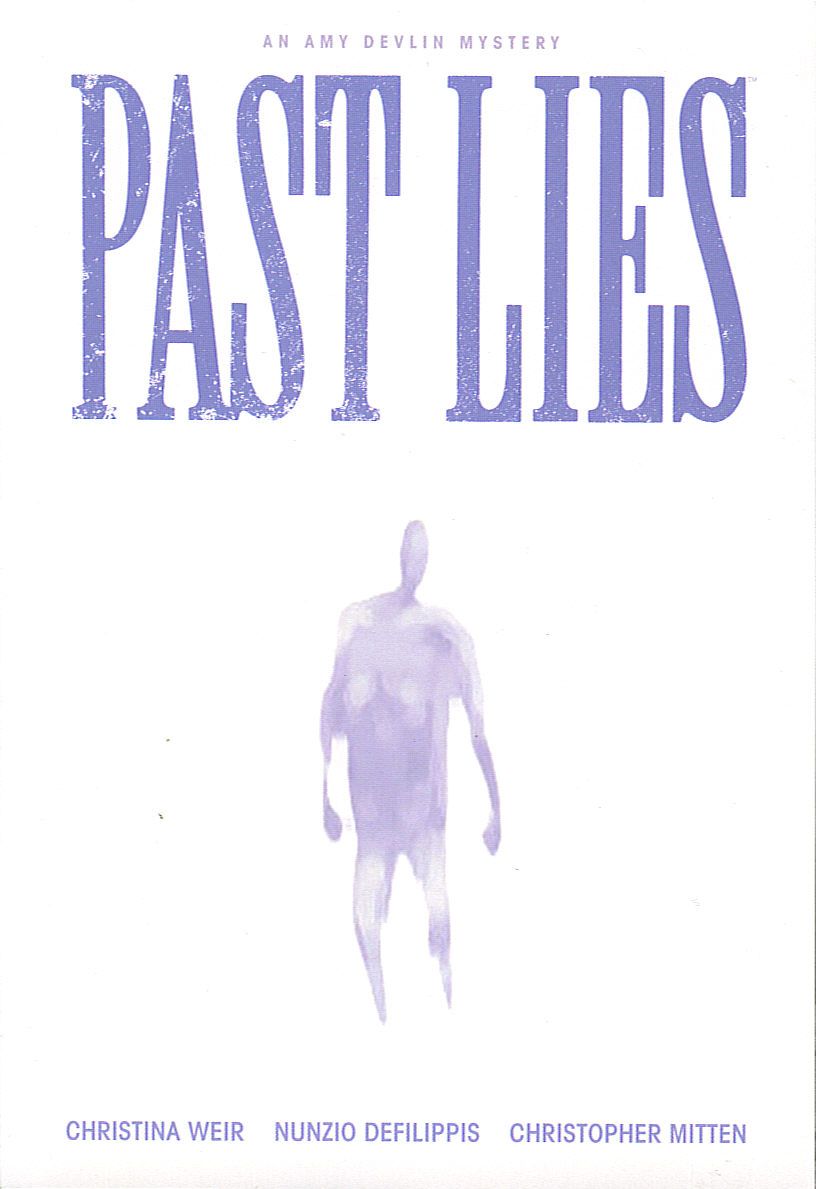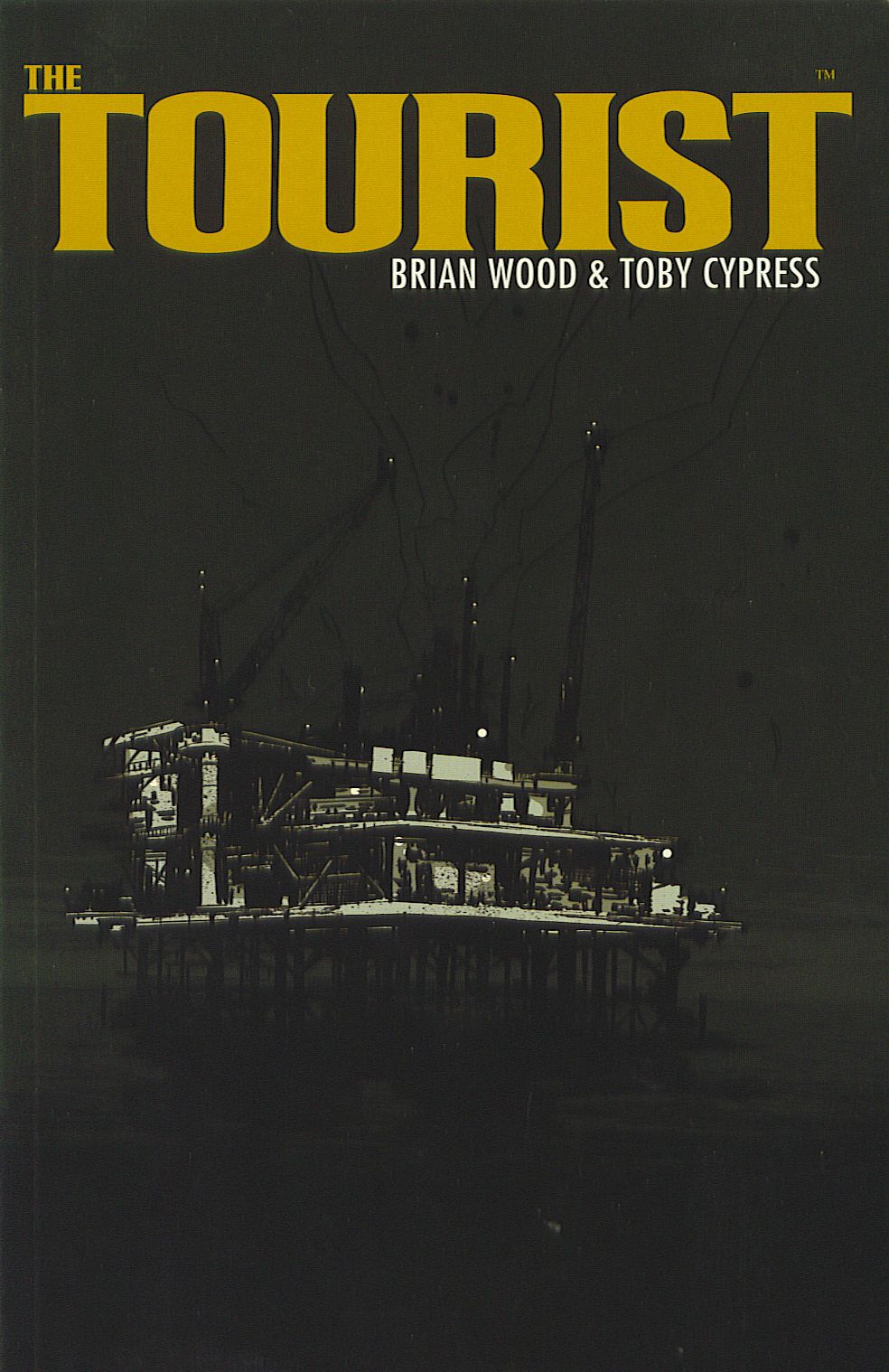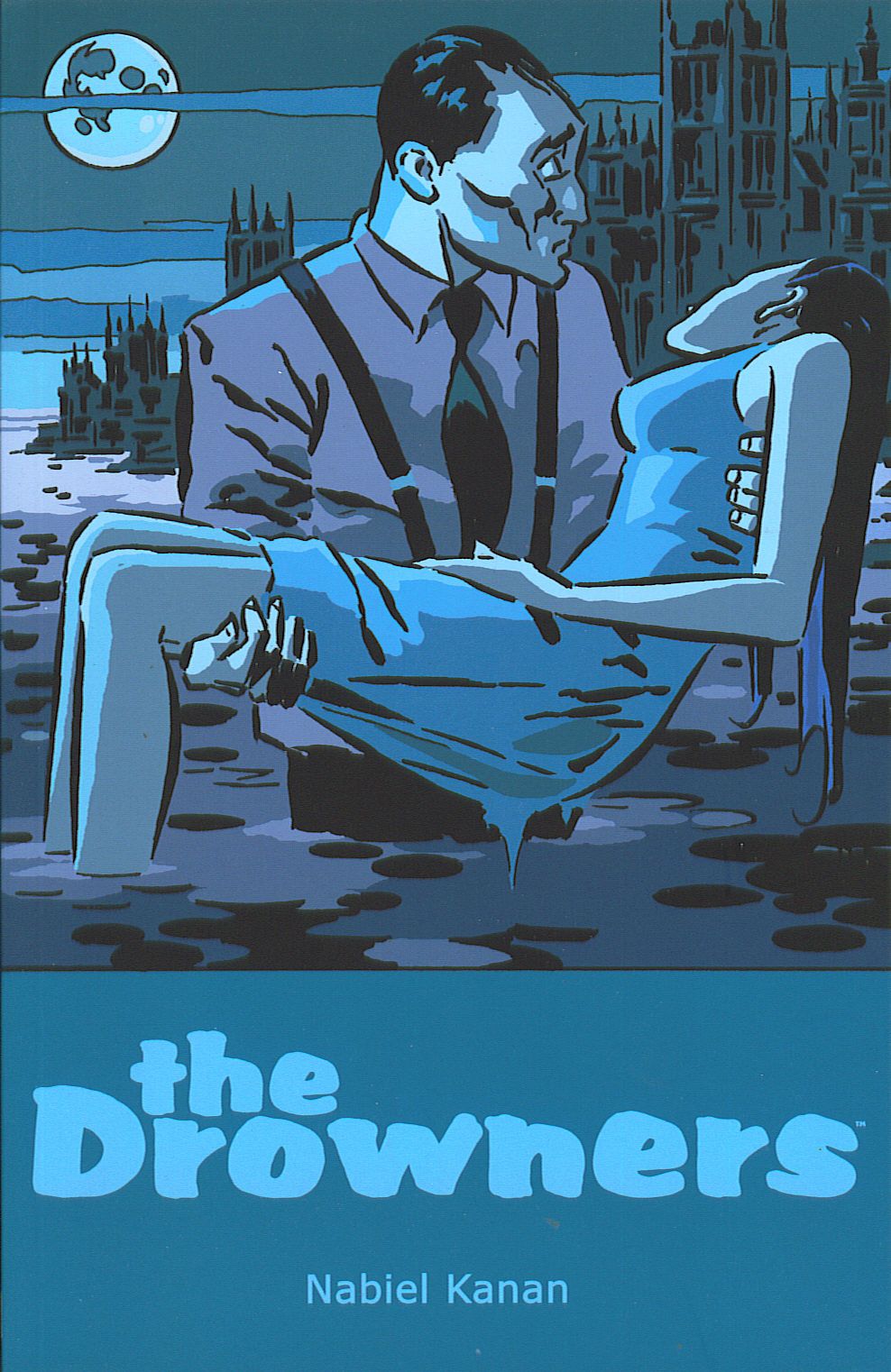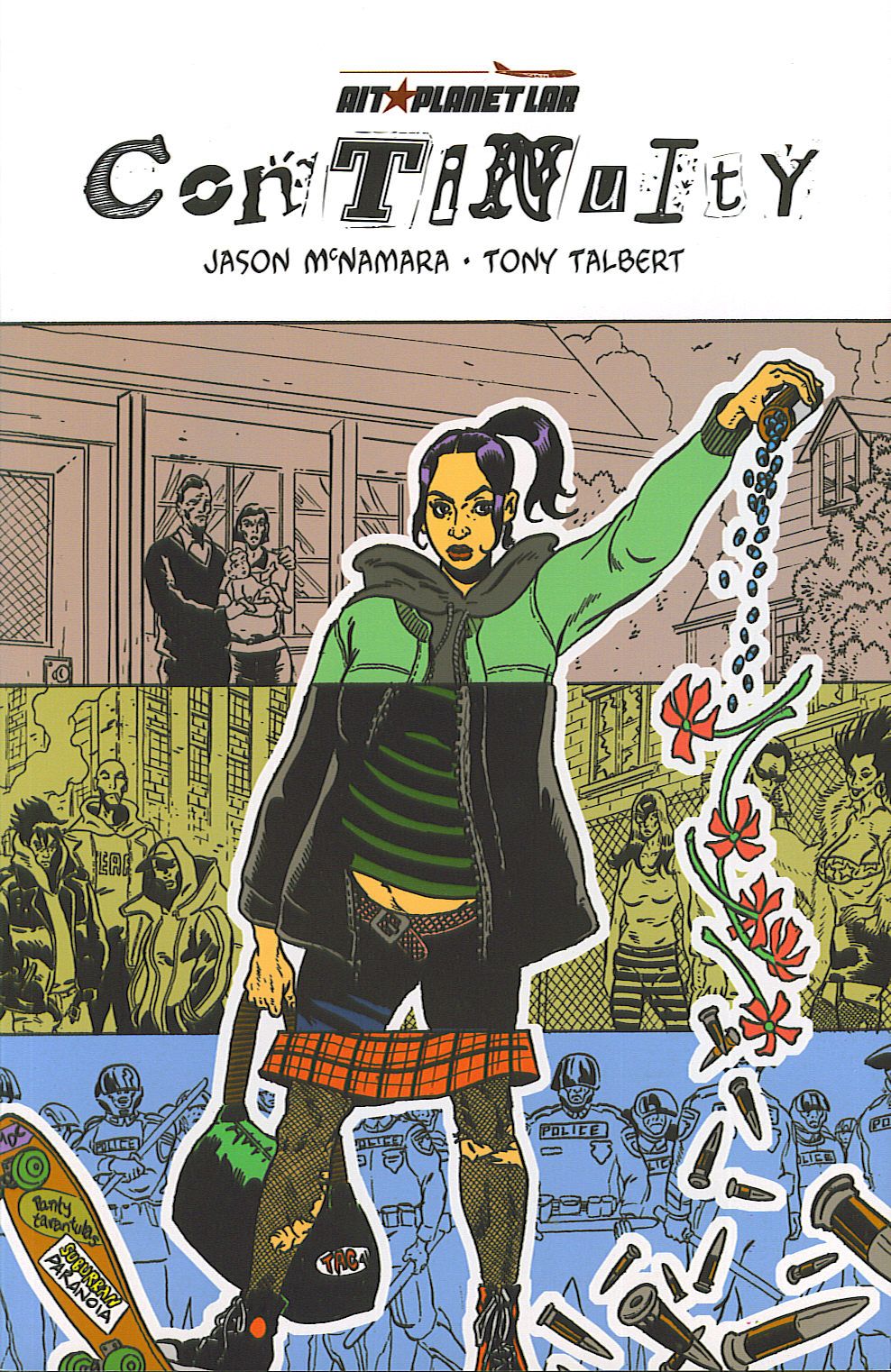I always like to give a shout-out to graphic novels that come out, because despite being usually more insightful and more daring comics literature, they often get swept under the carpet because they don't come out in neat little 22-page bundles. Unless you have a publicity hound on your side like Larry Young (and I'll get to Continuity in this post, believe me), these books sometimes pass everyone by. And that's a damned shame! Would the Founding Fathers have wanted you to skip these books just because they're a little longer and more expensive (in the short run, of course)? No they would not! So check some of these out - it's your patriotic duty!
These are in order that they came out, so the first two are a bit old. Sorry!
Past Lies by Christina Weir, Nunzio DeFilippis, and Christopher Mitten. Published by Oni Press, cost to you: $14.95.
I dig murder mysteries. I can't solve them, but I dig them. So this murder mystery intrigued me. Airplane magnate Trevor Schalk is searching for the secret to eternal life. His psychologist, Christopher Peck, hypnotizes him so that in his next life, right after his 25th birthday, he will remember everything about his old life. Presumably then his "soul" will live on, each time in a new body, and he will be immortal. Fine and dandy. The same night he is hypnotized, Trevor Schalk is murdered. The case is never solved. Twenty-five years later, a neophtye private investigator, Amy Devlin, gets a new client, Timothy Gilbraight, who has been having weird dreams. His doctor, Christopher Peck, has told him that he is the reincarnation of Trevor Schalk. He wants Amy to find out who killed him.
Simple, right? An old Los Angeles murder of a reclusive billionaire, plenty of suspects, a bizarre twist - what's not to like. I'm not going to go into this too much, because it's a lot of fun to read. Amy is a likeable character, and even she has secrets, which make her more interesting as she tracks down the murderer. We get a great deal of information about her, and it's obvious that Weir and DeFilippis like her a lot. You probably will too. She has moxey, she does!
The art is very nice - a bit sketchy, but we're able to tell everyone apart, which in a book with a large cast is crucial, and we get a good sense of L.A. It's always nice, when a book is set in someplace specific, that it feels like that place. As usual with good art, a lot of the goodness in in facial expressions, and although Mitten is not as good at that as, say, Rick Veitch is (see below), he still allows us to follow the hidden emotions on the characters' faces as Amy Devlin tries to figure out what happened 25 years before.
The biggest problem I have with this book is the manner in which Amy solves it. I have said this before and I'll say it again: great murder mysteries must be opaque the first time you read them and transparent the second time, when you know who the murderer is. This fails in the second regard. I went back and looked for the big clue that Amy talks about at the end, and I couldn't find it. That just means that it was such a big deal that Weir and DeFilippis were withholding it on purpose. That's dirty pool. We should be able to see exactly how the mystery gets solved, and in this case, we don't. It's not enough to keep me from enjoying this book, because that kind of well done murder mystery is extremely rare, but it's still a nagging concern.
Other than that, this isa fun book. Amy Devlin is obviously the star, and she's a wonderful character. Weir and DeFilippis want to build a series around her, either of graphic novels like this or of prose work, and they've done a fine job. We'll see if she returns.
The Tourist by Brian Wood and Toby Cypress. Published by Image, cost to you: $9.99.
I hate to look at cost, but for ten bucks, The Tourist is a worthwhile book. I have some problems with it, but it's intriguing and moody and dark and weird. I donot like the art at all, and therefore will probably not talk about it (it's just ugly - there, I'm done talking about it). However, the story makes up for the art, at least for a while. Endings, as usual, bug me, as they are the hardest thing to do, and this ends weirdly - almost enough to ruin it. It feels as if it's part one, and we're just waiting for the second part. I know it's not supposed to, but it ends so abruptly and on such a cliffhanging note that it just feels incomplete.
The set-up is fine. Moss, an American, arrives in a small town in the far north of the British Isles, where he ingratiates himself with the locals and gets a job on the oil rig on the ocean right outside of town. He gets in good with the one available local woman, Julie, who is a single mom. Of course, he has secrets, and it turns out he's AWOL from the military and is setting up a big drug deal, using the rig as a meeting place. Oh, that Moss - he's so sly!
It all hits the fan, of course. It wouldn't be terribly dramatic if it didn't. Wood does a very good job setting all this up. Moss isn't the most likeable guy in the world, but he does appear to be decent, especially around Julie and her daughter Samantha. He shows his evil side early on, but we still don't get the sense that he's a true "bad guy." When the guys chasing him show up, we root for him, even though we recognize that he has done some bad things and put Julie and Samantha in danger. Moss tries to shoot it out with the men, and this section is very tense and nicely done - even the art isn't as horrible here. When they capture Moss and put him in what they think is a death trap, we're just waiting to see how he gets out of it and saves the day. He does get out of it, but this is when the book goes awry. On the one hand, Moss acts like the scumbag we all suspected he is but were hoping wasn't. But, on the other hand, he decides to be heroic. Before he can do either one thing or another, the book ends. We never get to see what happens, even though we're pretty confident that heroism will win out. It's a strange way to end. I suppose Wood doesn't think it's necessary to see the resolution, but I think it is. The way it ends now, we want more. We write our own ending, which might be fine for you, but it's kind of annoying for me. Wood gets out of the problem of how to end something by not writing one. It's frustrating.
From what I have read by Wood, he seems to do this maddeningly often. He has very good ideas and sets up his stories very well, but they end poorly. And by "poorly" I don't even mean ambiguously, where the questions linger in the air and we ponder our place in the universe because of what he's written. Continuity (see below) ends (a bit)ambiguously, but it is still challenging. This just cuts off, and it's frustrating, especially because it doesn't appear as if Wood is going for anything more thana good solid action story with a bit of character development. He gets that, but forgets to finish the damned thing!
Can't Get No by Rick Veitch. Published by DC/Vertigo, cost to you: $19.99.
Rick Veitch takes us on a weird acid trip through pre- and post-September 11 America, and the results are decidedly mixed. Can't Get No is very much an allegorical work, and bogs down as aresult. It's not a bad book, because Veitch is far too talented to write and draw something bad, but while the metaphors - even when blunt - drive the book along and make it worthwhile, the storyand method Veitch uses is very distracting and detracts from the power the book could have.
The story is simplistic enough. Chad Roe is a successful businessman whoowns a permanent magic marker company. He lives in a beautiful houseand is married to woman who pays no attention to him. One day he goes to work anddiscovers that his company isbeingsued because the graffiti that is drawnusing his markers(which are called Eter-No-Mark)won't come off. In despair, he gets drunk andhooks up with a couple of women, who take himback to their apartment and, when he passes out, draw intricate lines all over him with his own marker. He can't go through his day normally because he looks like a freak, and when he goes back to the women, they have sex. He leaves New York with them,but things fall apart when the women get busted for drugs in arest stop in New Jersey. Chad escapes,but at that moment, theplanes fly into the World Trade Center. The people at the rest stop stare across the river as the towers collapse. The world has changed for them all.
This is really the beginning of Chad's journey. Before this his life had fallen apart, but now he needs to figure out what he's going to do with it. He can't return to his life in New York, and he scared his wife when he showed up covered in marker lines. He wanders to Atlantic City and eventually to the Nevada desert, where all the people he has met on the road end up in a celebration/eulogy for the events of September 11. He discovers that he has become a cultural icon, as others are drawing strange symbols all over their bodies. He also discovers that there is a way to get the marker off, and he is filmed and shown on television getting cleaned off. Finally, he returns to his life and regains his business, because his stunt at the festival has made his product viable again. At the end of the book, Chad is back to the status quo. Has anything really changed?
Veitch's art is spectacular in this book. There is no dialogue, and therefore we need to be able to track the characters' emotions through their movements and facial expressions, and Veitch is up to the task. The lack of dialogue makes the scene at the rest stop, when all the people watch the towers fall, all the more powerful, as we linger on each face and feel the horror they experience. The scenes at the end, when Chad ends up in Nevada and gains a measure of redemption, are also strong, especially when he hallucinates that he is on one of the buildings as it collapses. It's truly a gorgeous book to look at, and it makes a powerful impression on us.
Unfortunately, Veitch adds an omniscient narrator telling a convoluted story that mirrors the art but doesn't follow it. The narration is supposed to be portentous, but it's much more bloated and pretentious than that, and it meanders through long sentences stretched over pages and pages that appear to mean deep things but really don't. Let's look at the first few pages: "Even as it opens ..." in one box, and "... the eye might recoil." in the next, over a full-page shot of Chad's nouveau-riche bedroom, our star in the bathroom looking into his medicine cabinet. Next page: "Fearing the temptation ..." in the upper-left panel; "Of all that low-hanging fruit ..." in the upper-right panel; "... on the Tree of Knowledge." in the bottom panel. All this while Chad takes out a pill from the cabinet. It continues: "Better to stare straight ahead ... and affect the chiseled grimace ... that goes with one's prescribed position ... on the totem pole of life." Open any random page of this book and soak in the goodness: "As false arguments are rocked and toppled ... The illusion of separation between I and thou ... collapses ... Leaving a fragmenting certainty ... that each of us is just as disposable as the next poor cabbage-head ... sliced and diced in the Veg-O-Matic of life." Or: "Delirium successfully postponed ... He hands over responsibility for his upkeep ... to the nearest false idol. But phony gods don't generate heat ... They absorb it."
I shouldn't bash the narration that much, because Veitch does keep it pertinent to the images we see, but the point is - we don't need it at all. Everything he writes, in that overwrought, pompous tone, is spelled out on the page, and it's much more interesting for us to follow Chad through his journey to his own heart of darkness and imprint our own thoughts on it than have some disembodied voice intoning dull words to us that only reinforce what we could have figured out on our own. It's extremely distracting, and only weakens what Veitch is trying to do.
Because, when it comes right down to it, this is an allegory about America. It has to be, obviously. Veitch offers both a celebration and a critique of the American way of life and our response to September 11, which is an impressive achievement in its own right. He fills his book with American icons, especially when Chad wanders into an abandoned bicentennial theme park with giant papier-mache headsof all the presidents.He experiences a weird rave there of the dispossessed, with all sort of little symbols - the woman dressed as a colonial soldier with the child sucking her breast, for instance, and the fake harelip on the woman who looks and dresses like Jackie O - that are heavy with meaning. Veitchdoes not want to deal with the attacks themselves, which is a subtle dig at how we as Americans want to buryour heads in the sand. Chad flees New York instead of dealing with not only hisown problemsbut the problems suddenly present in the country.The fact that he goes through this very weird time is a reflection of what happened to our country in the aftermath of the attack. Directionless, we clutched at icons to lead us out of our despair, and Chad does that as well. In the end, however, hemust confront the tragedy head on, and it's only when he does that he can be reborn.
Veitch is celebrating America by saying that we are strong and even something as devastating as the attack on the World Trade Center, despite sending us into a tailspin momentarily, cannot dampen our spirit. Chad recovers from his depression and his weird markings to resume his successful life. This is, however, also a critique. Has he actually learned anything? He is no longer addicted to pills (I assume he's taking them for anxiety, but I can't find the drug on-line so Iguess it's made up), but other than that, has he grown at all? Veitch believes that this can-do spirit of America is, on the one hand, admirable, but also somewhat shallow. Chad Roe had a chance to leave his old life behind and become something new, and although it's heartening that he was able to resassert himself and get back up on his own two feet, it's also a bit of a tragedy that he does not appear to have learned anything from his experience. Has America learned anything? is what Veitch wants to know. He leaves the question unanswered.
Can't Get No is a difficult and challenging book, and it's fascinating to page through it. Veitch shoots himself in the foot with the over-the-top narration, but if you can get past that it's a troubling yet hopeful view of us after a great national tragedy. Like any interesting work of art, it asks you questions but provides no easy answers.
The Drowners by Nabiel Kanan. Published by Image/Desperado, cost to you: $14.99.
This is another mystery, a bit more esoteric than Past Lies, but still a mystery. The reason it resonates a bit more is because Kanan wants to examine the way one act can ensnare several people and change all of their lives.Emily, a young lady, is dead. She drowned by jumping off a yacht during a party. The splash she makes causes ripples that spread out and affect people in the most unusual ways. Kanan does a very nice job of showing the butterfly effect that a death can have, even on people Emily didn't know. The Drowners refers to all those people, not just Emily, who find themselves caught up in the whirlpool that her death creates. It's a haunting book, one that gnaws at you long after you've read it.
There are many stories connected with Emily. We begin with Dr. Green, a psychiatrist, who stands on the Thames and imagines that Emily, a former patient of his,keeps coming out of the water. Paul and Stephanie, a couple, are disturbed in the middle of the night by Stephanie's sister, Hayley, an addict who uses Stephanie, a nurse, to procure drugs. Meanwhile,she owes a tough guy named Shane a good deal of money, which she doesn't have. James Quinn, a media mogul, is watching as his company goes down the tubes. It's his anniversary, but he is working late and his wife, Kate, is upsetwith him. Dr. Green, who is also Hayley's psychiatrist, is convinced that James Quinn killed Emily. He wants revenge, as he was in love with her. Kate, in defiance of her husband, begins an affair witha young man, but things go horribly wrong one day while they're driving - they hit a homeless man and kill him, but Kate convinces Thom, her lover, to keep it quiet.
All of these threads circle around each other, as secrets are slowly exposed and lives are damaged. No one escapes the pull of the drowning girl. The title refers to everyone in the book, not just the ones who made Emily go into the water. The mystery of Emily's death is not that shocking, but the way Kanan brings all his characters into play and ties them all together is still a wonderful and gripping device. The Drowners is not a cheery book, but it is a very interesting one, and it shows us the ugliness of humanity while still showing that we don't have succumb to it.
The best compliment I can give this book is that it's like V For Vendetta in the way that Kanan introduces several characters, each with his or her own arc, and everything is connected in some way. The art style as well is vaguely similar to Lloyd's without being a copy. There is a lot to make you wonder in this book, about how people get involved in the wrong situations and with the wrong people, and how desperate people are driven to try to make things better, but often they cannot break free of the various things dragging them down. The characters in the book may be the drowners of the title, but, like Emily, they are also the drowned. This is a very riveting book.
Continuity by Jason McNamara and Tony Talbert. Published by AiT/Planet Lar, cost to you: $12.95.
First of all, I'd like to thank Larry or Josh or even Mimi - whoever over in the offices of AiT/Planet Lar sent this to me. Thanks! This, of course, was available not long ago on-line for free, but if you're like me, you despise pdf format, so you skipped it. I was wondering whether to buy it when it showed up in the mail, saving me the trouble. I can say, though, that it's definitely worth your money.
The story itself is nothing terribly spectacular. A young girl named Alicia (who for most of the book looks far older than 17, but nevermind that) is pregnant and trapped in a strange city run by the police and pharmaceutical companies. Homeless, she flees the cops after a failed attack on a truck carrying drugs and ends up in the basement of a doctor's house. Before turning her in, the doctor listens to her story, which is, frankly, unbelievable. Alicia tells the doctor (Dr. Lewis) that she was once a typical teenager, with no friends and a crush on the popular boy in school. Her mother is dead and her father is married to a new woman and has a new baby, so Alicia is being phased out of their lives. She has vivid dreams about Kurt, the boy she is crushing on, but her real life is depressing. She dreams about sex with Kurt and finds herself pregnant. She dreams about killing Kurt when he rejects her and when she wakes up, he's dead in real life. She flees to New York because she's afraid of who she might hurt next, and falls in with a group of homeless people who give her shelter and keep her awake. The few times she falls asleep the world changes slightly, until no one has ever heard of her or her father. Then, one night, the police smash up her little group and cripple their leader, another man she has a crush on. In despair, Alicia dreams of a bizarre world where drugs are plentiful (she is worried about her baby and wants to make sure it's safe, so she is always looking for vitamins and other supplements) and the police are in charge. When she wakes up, New York has disappeared and she is living in a strange new world. She joins a terrorist group devoted to breaking down the system and re-distributing goods to the oppressed, which is where she finds herself at the beginning, when it all falls apart. Dr. Lewis doesn't believe her, so she drugs Alicia and turns her over to the cops. Asher water breaks and she goes into labor, she dreams her final dream andmakes the world a better place for herdaughter. It's a nice little twistat the end, and gives us ahappy ending.
It's certainly an unusual story, but much of it is familiar. Wehave the teenager whofeels alienated fromhigh school, we have the not-terribly-subtle world that Alicia dreams into being where the cops abusecivil liberties and drug companies run everything (the police are really security forces paid for by the pharmaceutical companies), we have the nobility of the homeless people. Despite attempts by McNamara to give depth to the supporting characters, Alicia is really the only one who rises above stereotyping, butit's her story, anyway, so that's fine. Django, the leader of the homeless folk whom Alicia grows to love, is theonly other character who is somewhat developed,but even he still slides into stereotypes. However, this is less of a problem than you might think,for reasons I'll get into below.
Where this story shines in isthe more, shall we say, metaphysical aspects. First, the characters have to be stereotypes to a certain degree, especially after Alicia leaves the safety of her home in Connecticut for New York. Once we realize that Alicia can create realities by dreaming, we're never sure which of the characters she has created and which she hasn't. When the cops arrest her at the end, she explicitlytells themthat she created them. The implication is that Alicia created other characters, too, so they are what a 17-year-old alienatedgirl would create, and the fact that they are stereotypical makes more sense. I don't necessarily want to credit McNamara with such subtlety, butthe fact that Alicia states it later makes me wonder if that is what we're supposed to think.
More than that, the idea of dreaming a new world is always fascinating, andthe way McNamara shows us what's going on in Alicia's head is done well. It's unsettling to read Continuity because although the situations in which Alicia finds herself are ratherchildish, thefears behind it are not.The fact that Alicia dreams so hard for relief from her upsetting family and school life disturbs us, because we don't want to accept that this girl is so sad that she needsto escape intodreams.Alicia is selfish, sure, but she is also veryupset with the way her life has fallen apart. The fear she experiences once she realizes what she can do is palpable, too, as she is desperate to stay awake so she doesn't change anything else.The book becomes more and more paranoid and fearful, and we feel it right along with Alicia.
The happy ending is a bit confusing (I'm still trying to figure it out, exactly) but suitably heartwarming. It marks Alicia's growing maturity that she is finally able to mold her dreams to make othershappy instead of turning the world intoa dystopian nightmare.Like a dream, it's sufficiently ambiguous, but at the same time feels final and "real." It brings up, again, the question of howfar we trust our senses and what effect dreams have on the world. Is Alicia dead? If so, does she feel any different? Is her dream her new reality and therefore a version of her own personal heaven? It's interesting toconsider thesequestions as we ponder the end of the book.
The art is rough in a good way. Talbert does a nice job depicting the street life Alicia finds herself in and the weird alternate realityshe creates. The only real problem I have with his art is that Alicia looks far too old to be seventeen in the "present."When she tells Dr. Lewis her story, she looks fine as a teenager, but her present look isbizarre. I suppose we could say that life on the street has aged her, butshe's still strange looking.
This iscertainlyan interesting book. It's not quite as good as its premise promises, but it's an intriguing look at how our reality can change and what we can do to change it ourselves. If it'sa bit heavy-handed, it's still a very disturbing book about alienation andhowpeople try toovercome it.
So there you have it. Five interesting books youmay have overlooked. Yes, they cost a bit more, and Iknow some people don't like to invest that much in a book without knowing if they're going to like it, preferring instead to invest 3 dollars in a monthly book, and that's fine, but life is risk! Go a little nuts! It's only money!

